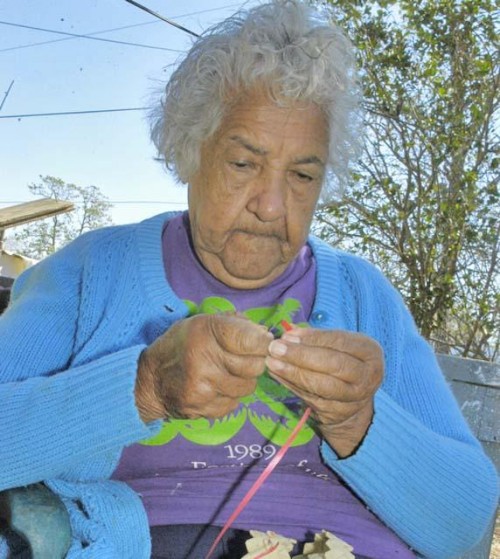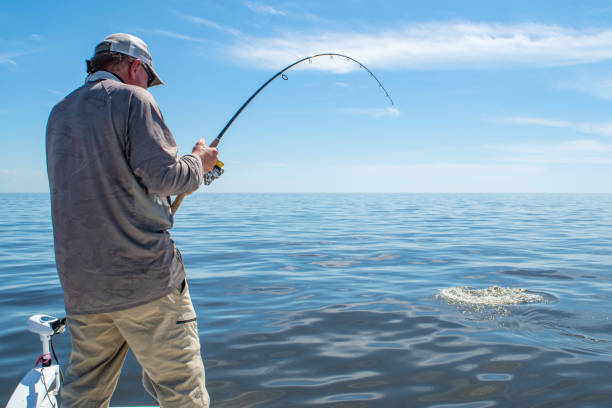Second Harvest Food Bank to deliver food to Terrebonne
August 19, 2010Monday, Aug. 23
August 23, 2010When her grandmother passed away, the only thing Lora Ann Chaisson wanted to remember her by was a hand-weaved clothing basket her great-grandfather made for her grandmother’s wedding.
“Indigenous people are known for basket weaving,” Chaisson said. “There are about 500 to 600 tribes in the U.S., but we all have our own unique way of doing basket weaving, and we all use different materials.”
The tribe Chaisson’s relatives belonged to existed in the bayous along south Louisiana since the 17th century, before New Orleans became a French colony, and even before recorded American history. And now, in light of the Deepwater Horizon oil disaster in the Gulf, the United Houma Nation’s culture remains in the balance.
“The identity of the UHN is closely tied to the lands and waters of coastal Louisiana,” Principal Chief Brenda Dardar Robichaux wrote in a press release. “Tribal leadership recognized immediately the dire ramifications of this event – all aspects of Houma culture and livelihood are in jeopardy from this oil disaster.”
Since the tribe, whose population is approximately 17,000 along the Gulf Coast, flourishes due to its relationship with the land and the water, its traditions could suffer greatly, according to Robichaux.
“The relationship between resources of the coast is a sacred one,” stated the press release. “UHN harvests palmettos in marshes for basket weaving, garfish for their scales to make jewelry, Spanish moss for traditional doll making and many other herbs and plants for traditional medicinal remedies used by healers.”
“Palmetto is an important plant to us for the fact that it was used for many different purposes, from housing to medicine to baskets and fans, that’s what the Houmas are known for, we’ve been weaving with palmetto plants for hundreds of years,” said Janie Luster, a Houma basket weaver.
Some of the tribe’s artisans, who still practice these traditional crafts, don’t want to think about what would happen if these resources were lost.
“It’s a tribe. It’s a way of life,” Chaisson said. “We don’t know what would happen as a tribe if some hurricane comes and dumps oil on our land, where would we go as a people? I don’t have the answer to that because I really don’t know.”
Ninety percent of the tribe resides in the wetlands of Lafourche, Terrebonne, St. Mary, St. Bernard, Plaquemines and Jefferson parishes. If natural resources are lost because of encroaching oil and the tribe is forced to relocate, Principal Chief Thomas Dardar reiterates it would change life completely for the United Houma Nation.
“Older generations hand down generations of trade, and not being able to go back to the water and not passing it on to the young people would be terrible,” Dardar said, noting the significant difference between hands-on “tricks of the trade” versus a simple verbal explanation.
“How would I tell you how to do certain tricks of the trade?” he asked. “We learn by doing it, and if the oil inundates our land, some of the plants a lot of our people use will be gone.”
In learning these traditions, like catching fish or crabs in nets, young tribe members also gain a sense of community and togetherness that, according to Dardar, cannot be duplicated.
“When you try to put it in words, the feeling and joy and meaning of it its just words. You need the full visual effect of when you pull the drag up and tie that bag, it is like Christmas,” he said. “It’s all simple things.”
After relearning a different form of basket weaving, Luster recently passed the skill on to her 27-year-old daughter, Ann.
“I was the first one to be able to relearn this in a non-traditional way, learning from a museum curator,” Luster said. “[But] Ann is the first traditional weaver, she learned it from me.”
Dardar even runs a youth camp in Lafitte where 40 to 50 children learn how to make a blowgun and experience traditional tribe dancing and drumming.
“These planned activities are to promote and teach our culture,” he said, while emphasizing the future for the UHN remains unclear.
“Some of us live to catch to catch instead of from check to check, and until we have succeeded in getting everybody back to work, I don’t know what will happen,” Dardar said.
UHN has also been waiting to be recognized by the federal government for the last 30 years without success, according to Dardar. As of right now, the federal government recognizes Chitomacha, Coushatta, Jeana Band Of Choctow and the Tunica Bilouxi in the state of Louisiana alone.
“We are recognized by the state, but the government has refused to fill the position of Indian office of Affairs,” Dardar told the Secretary of the Navy, Ray Mabus, during a public forum earlier this month. He added if the tribe were to have federal recognition, restoration of its sacred lands could be done quicker. Dardar asked Mabus for help to appoint someone at the federal level.
“These issues reach deeply into our souls,” Dardar said. “I hate to say it’s a ‘wait and see,’ but we’re doing everything we can.”
Robichaux shares the same sentiment and sees the effect of the oil spill on her people every day.
“Sometimes I worry that we could be the poster child for what’s wrong with the environment here, because we’re facing it all. … We as tribal citizens are paying the ultimate price because we’re along the coastline, and the traditional lifestyle is still fishing, and these location canals for the oil companies were built in the heart of our communities,” she said.
Despite her fears, Robichaux hopes for a brighter future for the Houma tribe.
“We are very resilient people, we take matters into our own hands,” Robichaux continued. “We are very proud, we take care of ourselves, but there comes a time when it starts to show it’s wear through the community and through our people, and that’s what we’re seeing. I think there’s a light at the end of the tunnel, but it doesn’t shine as bright as BP might have us think.”
Houma elder and expert basket-weaver, Marie Dean, 92, works on a half-hitch chain for one of her many palmetto baskets – a traditional craft the UHN is known for. COURTESY PHOTO












